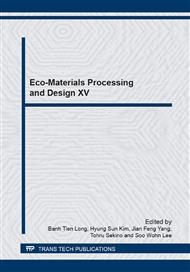p.281
p.285
p.289
p.293
p.297
p.303
p.307
p.311
p.315
Simulation Analysis of HPDC Process with Automobile Part by CAE
Abstract:
In present casting industries, product development paradigm is shifting from traditional trial-and-error to proof-of-concept based on CAE-enabled simulation. In the new production development paradigm, CAE simulation plays an important role because it models the entire casting process and reveals the dynamic behavior of the casting system in working conditions. In this research, Computer Aided Engineering (CAE) simulation was performed by using the simulation software (AnyCasting) in order to optimize casting design of an automobile part (Upper Oil Pan) which is well known and complicated to achieve a good casting layout. The simulation results were analyzed and compared carefully in order to apply them into the production die-casting mold. During the filling process, internal porosities caused by air entrapments were predicted and reduced remarkably by the modification of the gate system and the configuration of overflow. With the solidification analysis, internal porosities caused by the solidification shrinkage were also predicted.
Info:
Periodical:
Pages:
315-318
Citation:
Online since:
October 2014
Authors:
Keywords:
Price:
Сopyright:
© 2015 Trans Tech Publications Ltd. All Rights Reserved
Share:
Citation:


